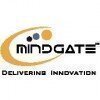Filter interviews by
Victoria's Secret Product Owner Interview Questions and Answers
7 Interview questions
AC defines the scope of a user story while DoD defines the quality criteria for the completed work.
AC specifies what needs to be done to complete a user story
DoD specifies the quality criteria that must be met for the work to be considered complete
AC is used to determine if a user story is complete
DoD is used to determine if the work is done and ready for release
AC is written from the perspective of the user
DoD is...
User stories are created by identifying user needs and defining the desired outcome in a concise and specific manner.
Identify user needs through research and analysis
Define the desired outcome in a concise and specific manner
Use the format 'As a [user], I want [goal], so that [reason]'
Prioritize user stories based on importance and feasibility
I listen to all stakeholders, identify common goals, and find a compromise that satisfies everyone.
Listen to all stakeholders' concerns and perspectives
Identify common goals and priorities
Find a compromise that satisfies everyone
Communicate the decision and rationale clearly
Document the decision and revisit if necessary
Definition of Ready is the criteria that a user story must meet before it can be accepted into a sprint, while Definition of Done is the criteria that a user story must meet before it can be considered complete.
Definition of Ready ensures that the user story is well-defined, understood, and testable.
Definition of Done ensures that the user story meets the team's quality standards and is ready for release.
Definitio...
User stories and AC are written by understanding user needs and defining acceptance criteria.
Gather requirements from stakeholders and prioritize them
Write user stories in a simple, concise format
Define acceptance criteria to ensure the story is complete
Collaborate with development team to refine and estimate stories
Example: As a user, I want to be able to search for products by category so that I can easily find ...
Prioritization techniques for arranging backlog items
Using the MoSCoW method to categorize items as Must have, Should have, Could have, and Won't have
Using the Kano model to classify items as Basic, Performance, and Excitement
Using the Value vs. Effort matrix to prioritize items based on their value and effort required
Using the Cost of Delay to prioritize items based on the cost of delaying their implementation
Col...
Omnichannel retailing is a strategy that integrates all sales channels to provide a seamless shopping experience.
Omnichannel retailing involves integrating all sales channels, including physical stores, online stores, mobile apps, social media, etc.
The goal is to provide a seamless shopping experience for customers, regardless of the channel they use.
To ensure consistency, retailers need to have a centralized inve...
Victoria's Secret Product Owner Interview Experiences
2 interviews found
I applied via Naukri.com and was interviewed in Mar 2023. There were 3 interview rounds.

(7 Questions)
- Q1. How do you create users stories?
- Ans.
User stories are created by identifying user needs and defining the desired outcome in a concise and specific manner.
Identify user needs through research and analysis
Define the desired outcome in a concise and specific manner
Use the format 'As a [user], I want [goal], so that [reason]'
Prioritize user stories based on importance and feasibility
- Q2. What are the scrum ceremonies you attend? Which of them are mandatory?
- Ans.
Scrum ceremonies attended by Product Owner
Sprint Planning: Collaborate with the team to plan the upcoming sprint
Daily Stand-up: Provide updates on progress and address any blockers
Sprint Review: Demonstrate completed work to stakeholders and gather feedback
Sprint Retrospective: Reflect on the sprint and identify areas for improvement
Backlog Refinement: Collaborate with the team to refine and prioritize backlog items
- Q3. What is omnichannel retailing? How do you ensure experience is same in omnichannels?
- Ans.
Omnichannel retailing is a strategy that integrates all sales channels to provide a seamless shopping experience.
Omnichannel retailing involves integrating all sales channels, including physical stores, online stores, mobile apps, social media, etc.
The goal is to provide a seamless shopping experience for customers, regardless of the channel they use.
To ensure consistency, retailers need to have a centralized inventory...
- Q4. How do you write user stories and AC?
- Ans.
User stories and AC are written by understanding user needs and defining acceptance criteria.
Gather requirements from stakeholders and prioritize them
Write user stories in a simple, concise format
Define acceptance criteria to ensure the story is complete
Collaborate with development team to refine and estimate stories
Example: As a user, I want to be able to search for products by category so that I can easily find what ...
- Q5. Difference between AC & Definition of Done?
- Ans.
AC defines the scope of a user story while DoD defines the quality criteria for the completed work.
AC specifies what needs to be done to complete a user story
DoD specifies the quality criteria that must be met for the work to be considered complete
AC is used to determine if a user story is complete
DoD is used to determine if the work is done and ready for release
AC is written from the perspective of the user
DoD is writ...
- Q6. Diff between Definition of Done vs Definition of ready?
- Ans.
Definition of Ready is the criteria that a user story must meet before it can be accepted into a sprint, while Definition of Done is the criteria that a user story must meet before it can be considered complete.
Definition of Ready ensures that the user story is well-defined, understood, and testable.
Definition of Done ensures that the user story meets the team's quality standards and is ready for release.
Definition of ...
- Q7. What are the prioritization techniques you use to arrange backlog items?
- Ans.
Prioritization techniques for arranging backlog items
Using the MoSCoW method to categorize items as Must have, Should have, Could have, and Won't have
Using the Kano model to classify items as Basic, Performance, and Excitement
Using the Value vs. Effort matrix to prioritize items based on their value and effort required
Using the Cost of Delay to prioritize items based on the cost of delaying their implementation
Collabor...
(2 Questions)
- Q1. Second round was with US counter part. Asked how do you handle difficult clients?
- Q2. How do you resolve conflicts between stakeholders?
- Ans.
I listen to all stakeholders, identify common goals, and find a compromise that satisfies everyone.
Listen to all stakeholders' concerns and perspectives
Identify common goals and priorities
Find a compromise that satisfies everyone
Communicate the decision and rationale clearly
Document the decision and revisit if necessary
Interview Preparation Tips
- Agile
- User Experience
- User Interaction
- Customer Handling
- Stakeholder Management
Skills evaluated in this interview
I applied via Recruitment Consulltant and was interviewed in Mar 2023. There were 4 interview rounds.

(1 Question)
- Q1. Generic product Management questions
(1 Question)
- Q1. Generic Management Questions
(1 Question)
- Q1. Salary discussion and expectation
Top trending discussions






Interview questions from similar companies

I appeared for an interview before Jul 2023.
(1 Question)
- Q1. How much expected salary
Interview Preparation Tips

I applied via Walk-in and was interviewed in Apr 2020. There were 5 interview rounds.
Interview Questionnaire
3 Questions
- Q1. 1. How to manage a Project, How to manage a team if we have a less time to complete the project?
- Ans.
Effective project management under tight deadlines requires prioritization, clear communication, and team motivation.
Prioritize tasks: Identify critical tasks that must be completed first. For example, use the MoSCoW method to categorize tasks as Must have, Should have, Could have, and Won't have.
Set clear goals: Establish specific, measurable objectives for the team to focus on. For instance, aim to complete a specifi...
- Q2. How to manage the team if we have a less time but lots of work but deliver the project on time?
- Q3. How to maintain the employee work as a manager?
- Ans.
Maintain employee work by setting clear expectations, providing feedback, recognizing achievements, and offering growth opportunities.
Set clear expectations and goals for each employee
Provide regular feedback and coaching to help employees improve
Recognize and reward achievements to motivate employees
Offer growth opportunities such as training and development programs
Create a positive work environment that fosters coll...
Interview Preparation Tips

I applied via Naukri.com and was interviewed in Aug 2023. There were 3 interview rounds.
(1 Question)
- Q1. Just asked about your experience, expertise, process followed n all
(1 Question)
- Q1. This was face to face. Question about example about customer differences and how you resolved that
(1 Question)
- Q1. Salary, work life
Interview Preparation Tips

I appeared for an interview in Feb 2025.
(1 Question)
- Q1. Asked technical questions
Interview Preparation Tips
I will suggest Discuss about the salary first in advance they are giving any reason like internal parity and all

Project Manager Interview Questions & Answers
Alchemy Techsol Indiaposted on 21 Feb 2025
I appeared for an interview in Jan 2025.
(1 Question)
- Q1. About my skills and previous company
Interview Preparation Tips

(1 Question)
- Q1. Explain about yourself
- Ans. I answered. That ended the interview
Interview Preparation Tips

I applied via Naukri.com and was interviewed in Sep 2021. There was 1 interview round.
Interview Questionnaire
1 Question
- Q1. SQL, Cloud, Power BI,
Interview Preparation Tips

I applied via Naukri.com and was interviewed in Oct 2021. There were 4 interview rounds.
Interview Questionnaire
9 Questions
- Q1. Java oops concepts
- Q2. Joins queries in MySQL
- Q3. Git or GitHub
- Q4. Cloud computing
- Q5. Prime number programming
- Ans.
A prime number is a natural number greater than 1 that cannot be formed by multiplying two smaller natural numbers.
A prime number has exactly two distinct positive divisors: 1 and itself.
Examples of prime numbers include 2, 3, 5, 7, 11, and 13.
The number 1 is not prime, and 2 is the only even prime number.
To check if a number n is prime, test divisibility from 2 to sqrt(n).
For example, to check if 29 is prime, test div...
- Q6. 2 max num in a array
- Ans.
Find the two maximum numbers in an array of strings.
Convert the array of strings to an array of integers.
Sort the array in descending order.
Return the first two elements of the sorted array.
- Q7. Java platform independent??
- Ans.
Java is platform independent due to its bytecode and the Java Virtual Machine (JVM) that allows execution on any OS.
Java code is compiled into bytecode, which is platform-independent.
The Java Virtual Machine (JVM) interprets bytecode on any operating system.
This allows Java applications to run on Windows, macOS, Linux, etc., without modification.
Example: A Java program compiled on Windows can run on Linux without recom...
- Q8. Primary key vs foreign key
- Ans.
Primary key uniquely identifies a record in a table, while foreign key establishes a link between two tables.
Primary key is used to enforce data integrity and ensure uniqueness of records.
Foreign key is used to establish relationships between tables and enforce referential integrity.
A table can have only one primary key, while it can have multiple foreign keys.
Primary key can be used as a foreign key in another table.
E...
- Q9. Rest API Webservices vs Soap Webservices
- Ans.
REST API is lightweight and flexible, while SOAP is more structured and secure.
REST uses HTTP protocol and supports multiple data formats like JSON, XML, etc.
SOAP uses XML protocol and supports only XML data format.
REST is faster and consumes less bandwidth than SOAP.
SOAP has built-in security features like WS-Security and WS-Trust.
REST is easier to implement and maintain than SOAP.
SOAP is better suited for enterprise-...
Interview Preparation Tips
Skills evaluated in this interview
Victoria's Secret Interview FAQs
Tell us how to improve this page.
Victoria's Secret Interviews By Designations
- Victoria's Secret Product Owner Interview Questions
- Victoria's Secret Golang Developer Interview Questions
- Victoria's Secret Garment Technologist Interview Questions
- Victoria's Secret Infrastructure Engineer Interview Questions
- Victoria's Secret Team Lead Operations Interview Questions
- Victoria's Secret Data Analyst Interview Questions
- Victoria's Secret Category Manager Interview Questions
- Victoria's Secret Digital Coordinator Interview Questions
- Show more
Interview Questions for Popular Designations
- Consultant Interview Questions
- Project Manager Interview Questions
- Product Manager Interview Questions
- Production Manager Interview Questions
- Program Manager Interview Questions
- Product Manager 2 Interview Questions
- Product Lead Interview Questions
- Group Product Manager Interview Questions
- Show more
Overall Interview Experience Rating
based on 2 interview experiences
Difficulty level
Duration
Interview Questions from Similar Companies
|
Senior Software Engineer
58
salaries
| ₹16.4 L/yr - ₹35.2 L/yr |
|
Software Engineer
46
salaries
| ₹11.5 L/yr - ₹22 L/yr |
|
Product Manager
37
salaries
| ₹14.5 L/yr - ₹36.2 L/yr |
|
Analyst
20
salaries
| ₹8 L/yr - ₹16.6 L/yr |
|
Automation Test Engineer
16
salaries
| ₹12 L/yr - ₹20 L/yr |

Tekwissen

Softenger

XcelServ Solutions

Capital Numbers Infotech
- Home >
- Interviews >
- Victoria's Secret Interview Questions















